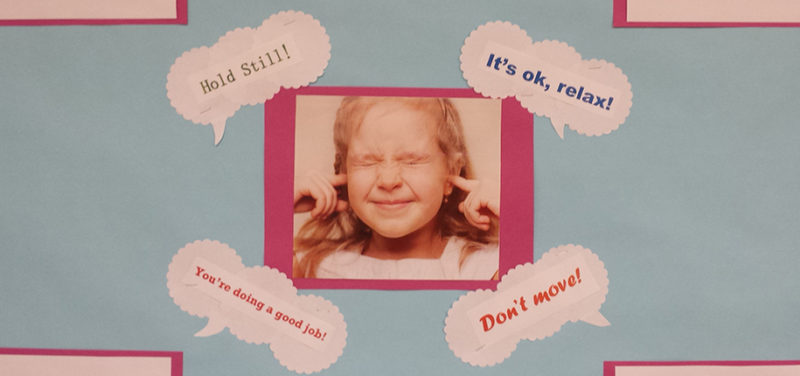
We’ve all been in that situation where too many people are talking at the same time. That can feel overwhelming or even disorienting. Imagine now being a child…in an unfamiliar healthcare setting…with strangers talking at the same time! For many children getting care at a hospital, this kind of situation only adds to their anxiety and stress.
In the Radiology Department at Cincinnati Children’s we are educating our staff on the benefits of one voice during procedures. By limiting the number of voices talking to children at the same time we can lessen the overall stimulation in the room and increase kids’ ability to cope more positively. Research has noted that it is most important to ensure that the patient is not lost in the shuffle of layered, overlapping voices and statements. Many voices, even if comforting can be overwhelming and confusing. Excessive verbal reassurances during a procedure, like repeatedly saying “It’s okay” or “You are doing great” can actually increase a child’s distress level. It is human nature to want to support a child—but for the child trying to cope, it can be over stimulating.
Children can better focus their attention and coping efforts when only one voice at a time is speaking to them. The one voice can be anyone in the room including a parent, caregiver, child life specialist, nurse, technologist etc. The speaking role can even change throughout the procedure. Staff working with patients and families should involve a parent or caregiver as a coach because children rarely engage in coping strategies without some assistance. Positive coaching can include encouragement to use deep breathing as a relaxation technique or distraction with singing, simple games or conversation.
Keep in mind the ONE VOICE approach the next time your child is visiting our Radiology Department or another healthcare setting. When we all work together we can minimize stress and increase positive coping for our patients.
Contributed by Chelsey Koehn, (Child Life Specialist I) and edited by Catherine Leopard,(Child Life Specialist III).
